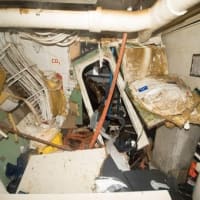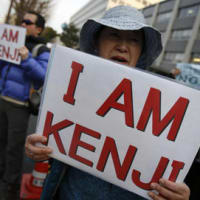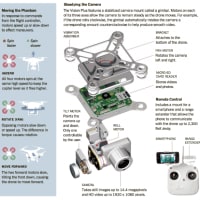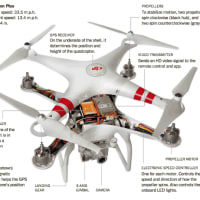X-Rays Scan Foods For The Secret Ingredient That Could Break A Tooth
歯を損なう食品混入物をX線でスキャン
実際苦情がでるのが月に15件から20件だとすれば、苦情に至らない混入案件を想像すると、その倍以上はあるだろう。であれば出荷前のチェックよりも、生産ラインそのものを総点検することこそ優先すべき、まして金属片が混入していたとなればなおさらだ。どうも、出荷の時点ではじけば良いとする考えにはついていけない。もちろんラインの総点検や修理、改善はエックス線機器の5万ドルは優に超えるとことは想像に難くない。
by NANCY SHUTE

Costco has pushed vendors to X-ray food to find "foreign objects" like metal and stones before they reach consumers. コストコは業者に対して金属や石などの異物を見つけるためにX線使用を要求している。
I don't know about you, but when I spoon into store-bought ice cream or chomp into hot dogs, I don't consider it a risky activity, one that could land me in the dentist's chair with a broken tooth. But it turns out that this does happen. Even Costco, the giant warehouse retailer, says it's true.
皆さんはどうか知りませんが、私は、店で購入したアイスクリームにスプーンを入れる時やホットドッグにかぶりつく時に、それが、歯を損傷して歯科の病院に駆け込むことになる危険な行為だと考えたことは有りません。 しかし、実際にはこういうことが起きているのです。 あの大手の倉庫小売コストコでさえあるといいます。
Not long ago, Costco was having big problems with bone in hot dogs. "We were having 15 to 20 broken teeth a month," Craig Wilson, Costco's vice president of quality assurance and food safety, told The Salt. "I finally got fed up with it and said, 'We need to put this under X-ray and you've got to get rid of these bones and cartilage.' As soon as they had it under X-ray, no more broken teeth. None. Zero."
コストコがホットドッグに混入している小骨で問題になったのは、そんなに前のことではありません。「月に15件から20件の歯が折れたというクレームがありました。」とコストコの食品品質保全副担当クレイグ・ウィルソンは話している。 「私もついに根を上げて、“これらの商品をX線で調べて小骨や軟骨の類を取り除くことが必要です。”と言いました。 X線にかけるようになってから、それらの案件の発生はゼロになりました。
Indeed, manufacturers are increasingly running foods through X-rays to hunt for metal or other contaminants that could lead to dangerous surprises. If they find anything, they make sure that batch doesn't reach the consumer. Costco has been a leader in pushing manufacturers to adopt X-rays for scary-sounding "foreign object control," the company says. "Stuff in foods is the biggest issue," says Wilson.
実際、メーカー各社は、危険を伴う金属片やその他の異物を見つけるためにX線を通すところが多くなってきています。 もし、異物が確認されたら、そのロットは全部消費者まで流れないようにしています。 コストコは、この響きの悪い「異物制御」の為にX線スキャンを業者に早くから率先して義務付けてきました。「食物の異物混入は大きな問題です。」とウィルソンは話している。
For decades, food processors used metal detectors to scan food for stray bits of metal that would fall off assembly-line machinery. But the metal detectors couldn't find plastic, bone or rock, and they were terrible at scanning wet, salty products like cheese. (Frozen pizza really stymies a metal detector.) They also couldn't scan food in metal containers, like pies or canned drinks.
何十年もの間、食品加工業者は生産ラインの機械からの金属片の紛れ込みを発見するために金属探知装置をしようしてきました。 しかし、金属探知装置はプラスティックや小骨、小石といった類は探知できませんし、水分を含んだり、チーズのような塩分を含む食品のスキャニングは困難でした。(冷凍ピザは金属探知器を受け付けません。)。 また金属探知器は当然、パイのような金属容器に入っているもの、或いは缶入飲料は無理です。
Each foreign object that makes it out the factory door can spark headaches, including customer complaints, recalls and lawsuits. So the requirement from Costco and other retailers hasn't been such a hard sell, despite the fact that a single X-ray machine can cost close to $50,000.
工場外での異物は、客からのクレーム、リコールそして訴訟など頭痛の種になりかねない。 だから、コストコからの要求は、X線の機械が5万ドルするとしても無理難題というものでもない。
Food X-ray machines are similar in concept to the X-rays that scan suitcases at the airport, but more sophisticated. They can scan multiple items in a second, with software judging whether the product is adulterated, rather than a beleaguered TSA agent.
食品のX線機械は基本的には空港の手荷物検査のX線機会と同じですが、それより精巧にできています。 それらは複雑な商品を秒単位でスキャンでき、空港のように国内安全保障局の係員を煩わせずに食品が異物を混入しているかどうかを判別します。
"You pass good products through it and it learns the signature of it," says Bob Ries, lead product manager for Thermo Fisher Scientific, a manufacturer of food X-ray machines. "It learns to ignore the product." Trainers then feed through known contaminants, to make sure the machine spots them.
「まず問題のない食品を通して、その特徴を記憶させます。 それにより、機械は無視して良い(スルーする)を読み取ります。」と食品X線機械のメーカーである「サーモ・フィッシャー・サイエンティフィックの主任生産部長のボブ・リース氏は話しています。
It's nice to know I don't have to worry about metal shavings in my ice cream, but is X-ray scanning safe? The radiation used in food scanning is much less than what's used for a medical X-ray, and also much less than the amount used to irradiate food to kill microbes. Ries says the food comes out the other end unchanged, aside from the fact that it's much less likely to contain unpleasant junk.
アイスクリームに金属小片が混入しているかいないか心配する必要が無くなるのは良いことですが、果たしてX線は安全なのでしょうか? 食品のスキャニングに使用している放射線は医療用のX線よりも弱く、バクテリアの殺菌目的で使用される放射線よりも遥かに低いレベルです。 リース氏は、不愉快な混入物が排除できるばかりでなく、X線機器を通しても食品は全く変化しませんと述べています。
We first heard about this technology thanks to Steve Alexander, a reporter at the Minneapolis Star Tribune who wrote about how a local bakery uses X-rays to make sure its pies contain nothing but fruit.
私達は、この技術についてミネアポリスのスター・トリビューンの記者である、スティーブ・アレキサンダー氏に伺いました。 同氏はパイがフルーツ以外を含んでいないことを確かめるためにX線を使う地方のベーカリー向上について記事を書いていました。
以下、上の記事に対する「いいね」が多かった読者の意見です。 なかなか面白かったので紹介します。
Laura McC (ElBigs) wrote:
If you need to scan food in order to see if it's worthy of eating, it's probably not worthy of eating.
食べられるか否かを知るためにX線に通す必要があるというのであれば、それはもとより食べるに値しないものだということです。
Recommend (43)
Jeff Schmidt (JeffFromOhio) wrote:
At the end of the article, they mention the food irradiation units that are sometimes used to kill pathogens. My thought, even as I was reading the article is, couldn't you combine the two? Food irradiation and checking for foreign objects in one step?
この記事の最後で、食品の雑菌を滅菌するための放射線照射機器について書いてありましたが、いっそのこと、それらを同時にできないものでしょうか? 記事を読んでいて気付いたのですが。
Recommend (23)
John Doe (PastaFaarian) wrote:
"Food X-ray machines are similar in concept to the X-rays that scan suitcases at the airport, but more sophisticated."
Considering the potential risks involved (i.e., breaking a tooth vs fiery plunge of death), I found that statement disturbing.
「食品用X線機器は空港のスーツケース用のX線機器と似ているが、それよりも精巧にできている。」と書いてありますが、潜在的なリスクを考えると、食品用はせいぜい歯を折る程度ですが、もう一方は生死にかかわります。 だとすると、この表現は・・・・少し混乱してしまいました。
Recommend (11)
歯を損なう食品混入物をX線でスキャン
実際苦情がでるのが月に15件から20件だとすれば、苦情に至らない混入案件を想像すると、その倍以上はあるだろう。であれば出荷前のチェックよりも、生産ラインそのものを総点検することこそ優先すべき、まして金属片が混入していたとなればなおさらだ。どうも、出荷の時点ではじけば良いとする考えにはついていけない。もちろんラインの総点検や修理、改善はエックス線機器の5万ドルは優に超えるとことは想像に難くない。
by NANCY SHUTE

Costco has pushed vendors to X-ray food to find "foreign objects" like metal and stones before they reach consumers. コストコは業者に対して金属や石などの異物を見つけるためにX線使用を要求している。
I don't know about you, but when I spoon into store-bought ice cream or chomp into hot dogs, I don't consider it a risky activity, one that could land me in the dentist's chair with a broken tooth. But it turns out that this does happen. Even Costco, the giant warehouse retailer, says it's true.
皆さんはどうか知りませんが、私は、店で購入したアイスクリームにスプーンを入れる時やホットドッグにかぶりつく時に、それが、歯を損傷して歯科の病院に駆け込むことになる危険な行為だと考えたことは有りません。 しかし、実際にはこういうことが起きているのです。 あの大手の倉庫小売コストコでさえあるといいます。
Not long ago, Costco was having big problems with bone in hot dogs. "We were having 15 to 20 broken teeth a month," Craig Wilson, Costco's vice president of quality assurance and food safety, told The Salt. "I finally got fed up with it and said, 'We need to put this under X-ray and you've got to get rid of these bones and cartilage.' As soon as they had it under X-ray, no more broken teeth. None. Zero."
コストコがホットドッグに混入している小骨で問題になったのは、そんなに前のことではありません。「月に15件から20件の歯が折れたというクレームがありました。」とコストコの食品品質保全副担当クレイグ・ウィルソンは話している。 「私もついに根を上げて、“これらの商品をX線で調べて小骨や軟骨の類を取り除くことが必要です。”と言いました。 X線にかけるようになってから、それらの案件の発生はゼロになりました。
Indeed, manufacturers are increasingly running foods through X-rays to hunt for metal or other contaminants that could lead to dangerous surprises. If they find anything, they make sure that batch doesn't reach the consumer. Costco has been a leader in pushing manufacturers to adopt X-rays for scary-sounding "foreign object control," the company says. "Stuff in foods is the biggest issue," says Wilson.
実際、メーカー各社は、危険を伴う金属片やその他の異物を見つけるためにX線を通すところが多くなってきています。 もし、異物が確認されたら、そのロットは全部消費者まで流れないようにしています。 コストコは、この響きの悪い「異物制御」の為にX線スキャンを業者に早くから率先して義務付けてきました。「食物の異物混入は大きな問題です。」とウィルソンは話している。
For decades, food processors used metal detectors to scan food for stray bits of metal that would fall off assembly-line machinery. But the metal detectors couldn't find plastic, bone or rock, and they were terrible at scanning wet, salty products like cheese. (Frozen pizza really stymies a metal detector.) They also couldn't scan food in metal containers, like pies or canned drinks.
何十年もの間、食品加工業者は生産ラインの機械からの金属片の紛れ込みを発見するために金属探知装置をしようしてきました。 しかし、金属探知装置はプラスティックや小骨、小石といった類は探知できませんし、水分を含んだり、チーズのような塩分を含む食品のスキャニングは困難でした。(冷凍ピザは金属探知器を受け付けません。)。 また金属探知器は当然、パイのような金属容器に入っているもの、或いは缶入飲料は無理です。
Each foreign object that makes it out the factory door can spark headaches, including customer complaints, recalls and lawsuits. So the requirement from Costco and other retailers hasn't been such a hard sell, despite the fact that a single X-ray machine can cost close to $50,000.
工場外での異物は、客からのクレーム、リコールそして訴訟など頭痛の種になりかねない。 だから、コストコからの要求は、X線の機械が5万ドルするとしても無理難題というものでもない。
Food X-ray machines are similar in concept to the X-rays that scan suitcases at the airport, but more sophisticated. They can scan multiple items in a second, with software judging whether the product is adulterated, rather than a beleaguered TSA agent.
食品のX線機械は基本的には空港の手荷物検査のX線機会と同じですが、それより精巧にできています。 それらは複雑な商品を秒単位でスキャンでき、空港のように国内安全保障局の係員を煩わせずに食品が異物を混入しているかどうかを判別します。
"You pass good products through it and it learns the signature of it," says Bob Ries, lead product manager for Thermo Fisher Scientific, a manufacturer of food X-ray machines. "It learns to ignore the product." Trainers then feed through known contaminants, to make sure the machine spots them.
「まず問題のない食品を通して、その特徴を記憶させます。 それにより、機械は無視して良い(スルーする)を読み取ります。」と食品X線機械のメーカーである「サーモ・フィッシャー・サイエンティフィックの主任生産部長のボブ・リース氏は話しています。
It's nice to know I don't have to worry about metal shavings in my ice cream, but is X-ray scanning safe? The radiation used in food scanning is much less than what's used for a medical X-ray, and also much less than the amount used to irradiate food to kill microbes. Ries says the food comes out the other end unchanged, aside from the fact that it's much less likely to contain unpleasant junk.
アイスクリームに金属小片が混入しているかいないか心配する必要が無くなるのは良いことですが、果たしてX線は安全なのでしょうか? 食品のスキャニングに使用している放射線は医療用のX線よりも弱く、バクテリアの殺菌目的で使用される放射線よりも遥かに低いレベルです。 リース氏は、不愉快な混入物が排除できるばかりでなく、X線機器を通しても食品は全く変化しませんと述べています。
We first heard about this technology thanks to Steve Alexander, a reporter at the Minneapolis Star Tribune who wrote about how a local bakery uses X-rays to make sure its pies contain nothing but fruit.
私達は、この技術についてミネアポリスのスター・トリビューンの記者である、スティーブ・アレキサンダー氏に伺いました。 同氏はパイがフルーツ以外を含んでいないことを確かめるためにX線を使う地方のベーカリー向上について記事を書いていました。
以下、上の記事に対する「いいね」が多かった読者の意見です。 なかなか面白かったので紹介します。
Laura McC (ElBigs) wrote:
If you need to scan food in order to see if it's worthy of eating, it's probably not worthy of eating.
食べられるか否かを知るためにX線に通す必要があるというのであれば、それはもとより食べるに値しないものだということです。
Recommend (43)
Jeff Schmidt (JeffFromOhio) wrote:
At the end of the article, they mention the food irradiation units that are sometimes used to kill pathogens. My thought, even as I was reading the article is, couldn't you combine the two? Food irradiation and checking for foreign objects in one step?
この記事の最後で、食品の雑菌を滅菌するための放射線照射機器について書いてありましたが、いっそのこと、それらを同時にできないものでしょうか? 記事を読んでいて気付いたのですが。
Recommend (23)
John Doe (PastaFaarian) wrote:
"Food X-ray machines are similar in concept to the X-rays that scan suitcases at the airport, but more sophisticated."
Considering the potential risks involved (i.e., breaking a tooth vs fiery plunge of death), I found that statement disturbing.
「食品用X線機器は空港のスーツケース用のX線機器と似ているが、それよりも精巧にできている。」と書いてありますが、潜在的なリスクを考えると、食品用はせいぜい歯を折る程度ですが、もう一方は生死にかかわります。 だとすると、この表現は・・・・少し混乱してしまいました。
Recommend (11)




















※コメント投稿者のブログIDはブログ作成者のみに通知されます